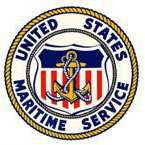-
Posts
2,133 -
Joined
-
Last visited
-
Days Won
11
Content Type
Profiles
Forums
Events
Store
Downloads
Gallery
Everything posted by Kiipu
-
Cross-Reference Translation courtesy of @Nobody. 氏房 高山刀鍛錬所作 – (Ujifusa, Takayama-To Tanrensho saku) – Made by Ujifusa at Takayama-Sword Forge. Garage Find WW2 Okinawa Sword
-
Threads never die, just servers! 謹作高山刀 Kinsaku Takayama-tō. 刀匠 Tōshō Swordsmith: 服部・正廣 Hattori Masahiro. 研師 Togishi Polisher: 福田・耕平 Fukuda Kōhei.
-
Ran across the above book today and had not heard anything mentioned about it. I did find on this forum a German language book by the same author. Not sure if this is an English translation of it or an entirely new book. A New Book For German Collectors Maybe someone can compare the table of contents of the German book to the English book? Hint: @vajo
-
Japanese Blacksmithing : Traditional Forging Methods for Knives, Swords, and Tools By Rudolf Dick Available on Nov 28, 2024 Discover the blacksmithing techniques used to make 10 traditional Japanese objects with insights from the artisans and rare glimpses inside their workshops. The art of blacksmithing and steel processing didn't reach Japan until more than 1,000 years after it was developed in the Western world. It is therefore all the more astonishing to see the high culture of forging that developed in the Land of the Rising Sun within a short period of time. This comprehensive reference book explains the traditional methods used by Japanese tool-, knife-, and swordsmiths and gives the reader a rare and unique look inside their workshops. Size: 6.5in x 9.0in | Pages: 160 | 175 color photos Binding: Hardback ISBN: 9780764368516 PRICE: $24.99 Link: Japanese Blacksmithing
-
Many thanks Lawrence. Characters and pronunciation below. Very nice sword in excellent condition. Thanks for sharing! 昭和己卯秋 Shōwa Tsuchinoto-U Aki. 興亞一心 Kōa Isshin. 満鐵作之 Mantetsu kore wo tsukuru South Manchuria Railway Company (SMR) made this.
-
Pat, the first page of NIck's thread goes into who could carry the Type 95. Short Development History of Type 95 Gunto Besides the lower ranks, officers could also buy or rent a Type 95. So the Type 95 could be carried by just about anyone if entitled to carry a sword. With that said, it is unlikely a colonel or general would be seen with one! Good luck with the display manikin.
- 1 reply
-
- 5
-

-

-
It is a sword made by the South Manchuria Railway Company (SMR) and is better known by the name Mantetsu. If possible, take a picture of the markings on the nakago mune (this is the blunt edge of the tang). Below is a link to a brief article about them. Mantetsu - South Manchurian Railway
-
These are army inspection marks and indicate the blade is most likely traditionally made. This blade predates the adoption of the later "Star" stamp. 名ホ.
-
昭和廿年仲春日 A day in mid-spring 1945. ? 豫州北條住博正作 Yoshū Hōjō-jū Hiromasa saku [? Possible "Star" stamp peened out.] Note the variant form of 住 used.
-
Trystan, thanks for solving the mystery of the Mikasa 三笠 logo. The JSW logo looks like the English letters A-T-V, but not sure of the order. Armstrong and Vickers were investors in JSW. A = Armstrong. T = ?. V = Vickers.
-

Spurious gunto sarute - a Chinese-made one?
Kiipu replied to Yukihiro's topic in Military Swords of Japan
The "Star" stamp was not used this early in 1942. It came later in 1942. However, if an army contract blade, it might have some inspection marks on the nakago mune. -
The tang is marked with the number 46. 四六 = 46.
-

How to authenticate a Army sword.
Kiipu replied to Shadow_Frog's topic in General Nihonto Related Discussion
The sword was refitted during the 1944 to 1945 time period for military purposes. The 昭 stamp is clearly visible and thus accounts for the second mekugi ana (tang hole). 関佐光信光作 Seki Sakō Nobumitsu saku. This sword is a textbook example of what is discussed in the article below. Note the poorly cast brass crossguard, the non-pierced iron? kabutogane. As indicated, it would have had a leather combat cover over the scabbard. I think the sword is worth the asking price. The Atsuta Factory & Military Swords -
Just one more thing, the katakana characters are following the order of the Iroha poem. Japanese mllitaria collectors frequently refer to them by the number and not the sound. 1. イ I. 2. ロ RO. 3. ハ HA. 4. ニ NI. Iroha
-
It is the katakana character ニ which is pronounced as "NI". It is used as a prefix to the serial number. ニ 三七五 NI-375. When time permits, can you post pictures of both sides of the tang and one overall picture of the sword with scabbard placed below the blade? For starters, take a look at the article below. Mantetsu - South Manchurian Railway
-

Attention Mantetsu Owners: A Survey
Kiipu replied to Bruce Pennington's topic in Military Swords of Japan
Many thanks for looking Peter. No need to proceed further and risk damage to the habaki. The kabutogane looks to have a deeply struck 東, which would indicate an army contract blade from 1942. -
The red paint toward the bottom of the tang is the number 23. The prefix to this number eludes me however. This number is also on the bottom of the hilt. 二三 = 23.
-

Attention Mantetsu Owners: A Survey
Kiipu replied to Bruce Pennington's topic in Military Swords of Japan
Peter, can you check the date side of the tang, that is the side marked 昭和壬午秋, for any small M stamps. The flattened M stamp will usually be located toward the top, the bottom, or both top & bottom. If on the top, they are sometimes under the habaki. -
Type 95 Military Sword made by Suya, serial number 49810. Seems the pictures are now missing from the OP. Fortunately, I had downloaded and saved the pictures for later viewing. Attached are the pictures which have been resized and converted to jpegs.
-
In the meantime, take a look at this Hiromasa 博正. I wonder if this is another example of a stamp removal? Thoughts anyone? 豫州北條住博正作 昭和十八年二月日
-
When the dust settles, please post a picture of this side of the tang. Also, can you see the outline of the removed stamp or is it completely obliterated?
-
I am told by someone more knowledgeable than I am that it is a "navy" helmet and not necessarily a "NLF" helmet. If you have additional questions, I would suggest posting over at the Japanese subforum at WRF. WRF Japanese Militaria
-
Ran across this a few days ago while reading Dawson's book. The quote is coming from a picture caption and is easily overlooked. Dawson, Jim. Swords of Imperial Japan, 1868–1945. Cyclopedia edition. Stenger-Scott Publishing, 2007. Page 156.
-
Looks like a name stamped on the crossguard. 高塚 Takatsuka plus other pronunciations. The first name is hard to make out but ends with 崎.









